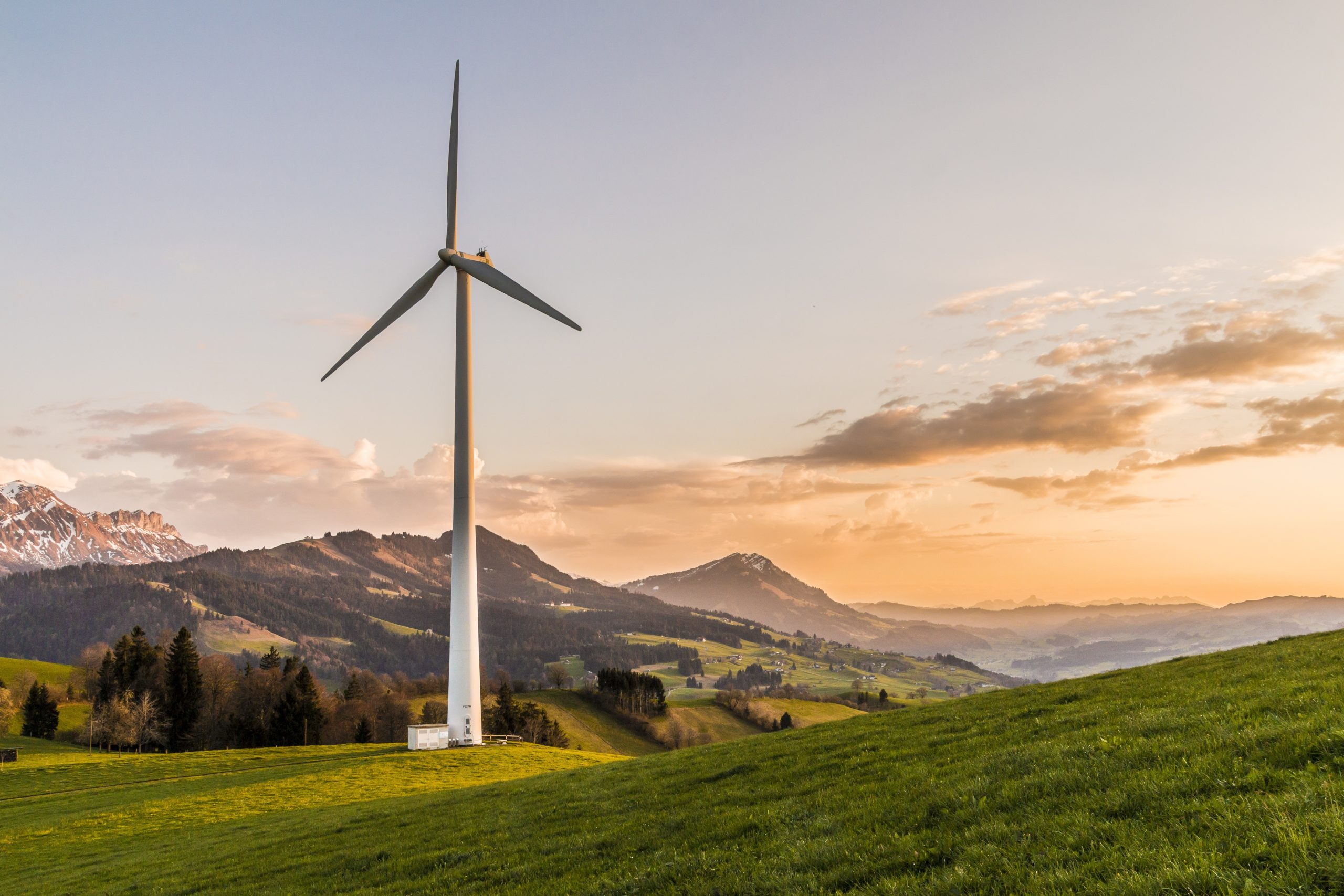
Renewable energy
Renewable energy refers to energy sources that are naturally replenished and can be used without depleting their finite resources. These energy sources are considered sustainable because they are continually available and do not contribute significantly to environmental degradation or climate change.
Renewable energy is derived from sources such as sunlight, wind, water (hydropower), biomass, and geothermal heat. These sources provide an alternative to conventional fossil fuels like coal, oil, and natural gas, which are finite and produce greenhouse gas emissions when burned for energy.
Types of Renewable Energy
Here are some common types of renewable energy:
Solar Energy

Solar energy refers to the radiant light and heat energy emitted by the Sun, which can be harnessed and converted into usable forms of power. It is a renewable and abundant source of energy that has gained significant attention in recent years.
Solar energy can be utilized in two primary ways:
- Solar Photovoltaic (PV) Systems: Solar PV systems convert sunlight directly into electricity using photovoltaic cells. These cells are typically made of semiconductor materials like silicon, which generate an electric current when exposed to sunlight. Solar panels comprised of numerous PV cells are installed on rooftops, open land, or integrated into building structures to capture sunlight. The generated electricity can be used on-site or fed into the power grid.
- Solar Thermal Systems: Solar thermal systems capture the heat from the Sun and use it for various applications. One common application is heating water for domestic or industrial use. Solar thermal collectors, such as flat-plate collectors or evacuated tube collectors, absorb the Sun’s heat and transfer it to water or a heat transfer fluid, which can be used for space heating, water heating, or industrial processes.
Wind Energy

Wind energy refers to the process of harnessing the power of wind to generate electricity or perform mechanical work. It is a form of renewable energy that utilizes the kinetic energy of moving air masses caused by natural weather patterns. This energy can be converted into useful forms, such as electrical power, through the use of wind turbines.
Wind turbines are tall structures equipped with large rotor blades that capture the wind’s energy. When the wind blows, it causes the rotor blades to rotate. This rotation drives an internal generator, which converts the mechanical energy into electrical energy. The electricity generated by wind turbines can be used to power homes, businesses, or even entire communities.
Hydroelectric Power

Hydroelectric power, also known as hydroelectricity, is a form of renewable energy that harnesses the power of flowing or falling water to generate electricity. It is one of the oldest and most widely used sources of renewable energy worldwide.
The basic principle of hydroelectric power involves the conversion of the kinetic energy of moving water into electrical energy. This is typically achieved by building a dam on a river or a reservoir to create a large artificial lake, known as a reservoir. The potential energy of the elevated water is then used to turn turbines, which are connected to generators that produce electricity.
Here’s a simplified explanation of how hydroelectric power works:
- Dam and Reservoir: A dam is constructed across a river to create a reservoir. The reservoir stores a large amount of water, and its height determines the potential energy available.
- Intake: Water from the reservoir is released through an intake structure, usually located at the base of the dam.
- Penstock: The water flows through a large pipe called a penstock. The penstock carries the water to the turbines, and its pressure increases as the water descends.
- Turbines: The high-pressure water from the penstock strikes the blades of the turbines, causing them to spin. The turbines are connected to generators.
- Generators: As the turbines spin, they rotate the shafts of the generators, which contain powerful magnets surrounded by copper coils. The motion of the magnets induces an electric current in the coils, producing electricity.
- Transmission: The generated electricity is sent to a transformer, where its voltage is increased for efficient long-distance transmission through power lines.
- Distribution: The electricity is then distributed to homes, businesses, and industries through the electrical grid for various uses.
One significant advantage of hydroelectric power is that it is a clean and renewable energy source. It produces no direct greenhouse gas emissions during operation, making it environmentally friendly compared to fossil fuel-based power plants. Additionally, hydroelectric power plants can be highly efficient and provide a consistent and reliable source of electricity.
However, the construction of large-scale hydroelectric projects can have environmental and social impacts. Building dams may require the displacement of communities, alter ecosystems, and impact fish migration patterns. Therefore, careful planning and consideration of the potential impacts are necessary when developing hydroelectric power projects.
Overall, hydroelectric power plays a vital role in the global energy mix and contributes to the transition to a more sustainable and low-carbon future.
Geothermal Energy

Geothermal energy is a form of renewable energy derived from the heat stored within the Earth’s crust. It harnesses the natural heat generated by the Earth’s core, which is primarily produced by the radioactive decay of minerals. This heat energy can be extracted and utilized for various purposes, including electricity generation and heating.
The Earth’s interior heat is transferred to the surface through conduction and convection processes. In areas where the heat flow is relatively high, geothermal reservoirs are formed. These reservoirs typically exist in regions with active volcanoes, geysers, or hot springs, but they can also be accessed through drilling deep into the Earth’s crust in other areas.
To tap into geothermal energy, wells are drilled into the underground reservoirs to access hot water or steam. The steam or hot water is then brought to the surface and used to drive turbines, which generate electricity in geothermal power plants. In some cases, the geothermal fluids can be directly used for heating purposes without generating electricity.
Geothermal energy offers several advantages as a renewable energy source. It is considered reliable and baseload power, meaning it can provide a constant and consistent source of energy, unlike solar or wind power, which are intermittent. Geothermal power plants have a long operational life and produce minimal greenhouse gas emissions, making them environmentally friendly.
However, the use of geothermal energy is limited to areas with favorable geological conditions, and the development of geothermal projects requires significant upfront investment. Additionally, the extraction of geothermal fluids can sometimes lead to the depletion of the reservoir or the release of harmful gases and minerals, necessitating careful management and monitoring of the resource.
Overall, geothermal energy is a promising renewable energy source that can contribute to reducing greenhouse gas emissions and diversifying the global energy mix. Ongoing research and technological advancements are aimed at expanding its utilization and making it more economically viable in a wider range of locations.
Biomass
Biomass refers to any organic matter derived from living or recently living organisms that can be used as a source of energy. It can include various types of materials, such as wood, agricultural crops, crop residues, algae, animal waste, and dedicated energy crops.
Biomass contains stored energy from the sun, captured through the process of photosynthesis. When biomass is burned or undergoes certain chemical processes, it releases this stored energy in the form of heat or electricity. Biomass can be used for heating and cooking in residential settings, generating electricity in power plants, producing biofuels, and even serving as a feedstock for the production of various chemicals.
There are different methods to convert biomass into energy. The most common approach is combustion, where biomass is burned directly to produce heat or to power steam turbines for electricity generation. Biomass can also undergo biochemical processes like fermentation or anaerobic digestion to produce biofuels such as ethanol and biogas. Additionally, thermochemical processes such as gasification and pyrolysis can convert biomass into synthetic gases, liquids, or solid fuels.
The use of biomass as an energy source has both advantages and challenges. On the positive side, biomass is considered a renewable resource because it can be regrown and replaced over time. It can help reduce greenhouse gas emissions compared to fossil fuels, as the carbon dioxide released during its combustion is offset by the carbon dioxide absorbed during plant growth. Biomass can also provide economic opportunities by supporting agricultural and forestry industries.
However, there are also concerns associated with biomass utilization. The sourcing of biomass should be done sustainably, ensuring that it does not lead to deforestation or compete with food production. Additionally, the combustion of biomass can release pollutants into the air, although modern technologies and proper emission controls can mitigate these issues.
Overall, biomass represents a versatile and renewable energy source that can contribute to the diversification of energy supplies and the reduction of greenhouse gas emissions. Ongoing research and technological advancements aim to improve the efficiency and environmental impact of biomass conversion processes.
Tidal and Wave Energy

Tidal and wave energy are forms of renewable energy that harness the power of ocean tides and waves to generate electricity. Here’s a brief explanation of each:
- Tidal Energy: Tidal energy is generated by capturing the energy of the rise and fall of tides. It relies on the gravitational forces between the Earth, the Moon, and the Sun. Tidal power plants typically use barrages or tidal turbines to convert the kinetic energy of tidal currents into electricity.
- Tidal Barrages: A tidal barrage is a dam-like structure built across a bay or an estuary. During high tide, water flows into the reservoir behind the barrage through gates or turbines, which generate electricity as the water flows out during low tide. Tidal barrages are usually large-scale projects that require a significant tidal range to be economically viable.
- Tidal Turbines: Tidal turbines are similar to wind turbines, but they operate underwater. They are placed on the seabed or mounted on structures, such as poles or frames, in areas with strong tidal currents. As the tidal currents flow, they drive the rotors of the turbines, generating electricity.
- Wave Energy: Wave energy is derived from the motion of ocean waves. Waves are created by the wind blowing over the surface of the water, and wave energy devices aim to capture the energy contained in these waves.
- Oscillating Water Column (OWC): OWC systems consist of a partially submerged chamber with an opening below the waterline. As waves pass, the water level inside the chamber rises and falls, causing the air trapped above to move in and out. This movement drives a turbine connected to a generator, producing electricity.
- Point Absorbers and Attenuators: These devices are designed to absorb the energy of waves through the motion of floating structures. Point absorbers move up and down with the waves, while attenuators are long, segmented structures that flex in response to wave motion. Both types use hydraulic systems or mechanical mechanisms to convert the energy into electricity.
Tidal and wave energy have the advantage of being highly predictable and consistent compared to other renewable sources like solar or wind. They are considered clean sources of energy because they produce no direct emissions and have a relatively low impact on the environment. However, the technologies are still in the early stages of development, and deploying large-scale projects can face challenges such as high costs, technical difficulties, and potential environmental impacts on marine ecosystems.
Advantages of renewable Energy
Renewable energy sources offer numerous advantages, including:
- Environmental Benefits: Renewable energy produces minimal greenhouse gas emissions, helping to mitigate climate change and reduce air pollution. It also has a lower environmental impact during extraction, transportation, and usage compared to fossil fuels.
- Energy Security: Renewable energy sources are abundant and widely distributed, reducing dependence on imported fossil fuels and increasing energy security for countries.
- Economic Opportunities: The renewable energy sector has the potential to create jobs and stimulate economic growth. Investments in renewable energy technologies can lead to the development of new industries and markets.
- Sustainability: Unlike fossil fuels, renewable energy sources are naturally replenished and not subject to depletion. This makes them a more sustainable long-term solution for meeting global energy demand.
Despite their many benefits, renewable energy sources face challenges such as intermittency (in the case of solar and wind power), higher upfront costs for infrastructure, and the need for energy storage solutions. However, advancements in technology and supportive policies have been driving the growth of renewable energy adoption worldwide, making it an increasingly vital part of the global energy mix.
READ ALSO: RECYCLING TIPS FOR STUDENTS








